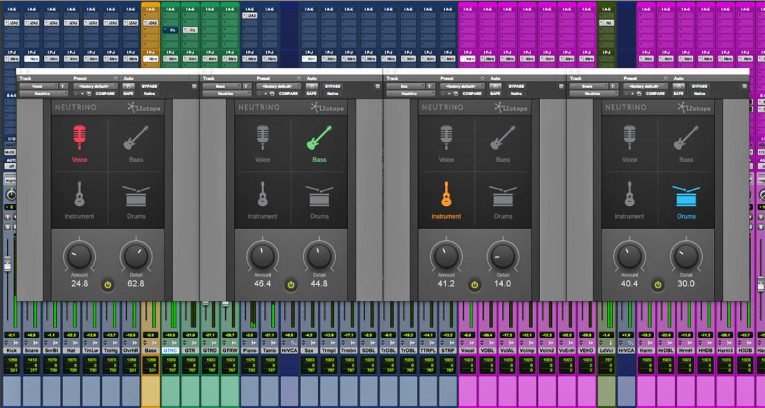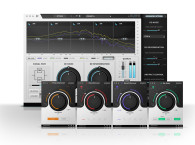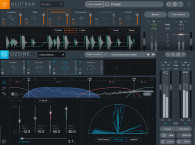
During IBC 2016 we met once again with the iZotope team demoing the company’s latest products and technologies and we learned about the impeding launch of a new series of products based on their latest audio processing technologies. To create awareness of the upcoming possibilities, iZotope decided to introduce a free spectral shaping plug-in, very basic in its interface, but effective when applied to individual tracks of a DAW session. The plug-in is called Neutrino and also serves to show how iZotope intends to make its sophisticated audio processing and algorithms available to a wider number of users, which might not necessarily need all the power and programability of their most sophisticated professional applications, such as Ozone and the RX suites of tools.
Unlike traditional compressors and equalizers, Neutrino analyses the incoming audio and applies gentle amounts of dynamics processing across dozens of psychoacoustically spaced frequency bands. It customizes the processing based on four modes: Voice Mode focuses processing on mid and high frequencies for adding clarity and detail that helps vocals sit on top of the mix without becoming harsh or strident; Instrument Mode smoothes resonant frequencies while preserving the authentic character of the instrument; Bass Mode is designed to attenuate notes that stick out while adding punch and weight to electric, acoustic, and synth basses; And finally, Drum Mode emphasizes transient detail across the spectrum while minimizing frequency build-ups that can sound “muddy” or “flabby.”

With simple controls and low-CPU usage, Neutrino can be applied on every track in a DAW session and produces better-balanced mixes, conceptually similar to analog summing or console emulations, without sacrificing dynamics and sonic integrity. Neutrino is based on perceptual hearing models and transparently focuses on reducing momentary unevenness in a signal, in a way that conventional equalizers and compressors cannot.
The original research that contributed to spectral shaping centered around iZotope’s latest Maximizer algorithm, IRC IV, which was first released in Ozone 7. The goal was to develop a more transparent form of limiting that was frequency dependent, without radically affecting the timbral character of the music when used judiciously. When using a broadband limiter, the limiting is applied across the entire spectrum, even if the peaks in the signal were focused in just a particular frequency range. With spectral shaping, the limiting could detect frequency bands which are producing the most peaks, and then apply limiting only in those areas and only when peaks were present. The result was refined and tuned extensively before implementation in Ozone 7 and is now optimized in this simple plug-in allowing users to interact with the technology in a very simple but effective way.
Users just have to select which type of signal they have on the track from one of the four basic modes, an apply the amount of processing they wish with more or less detail. Individual processed tracks will reveal very subtle differences, but the effective results will be felt across the whole mix. Best of all, it’s free to download, and easy to use.
www.izotope.com






